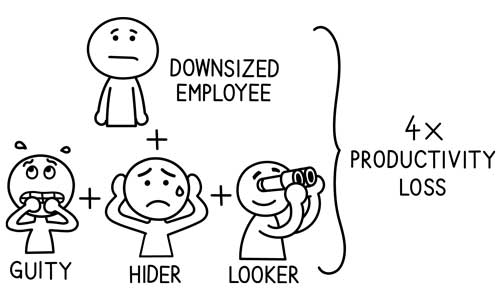Plan for the Hidden Costs of Downsizing
Plan for the Hidden Costs of Downsizing
In Omaha we’ve had some recent news of layoffs with ConAgra, a large package foods company, relocating their headquarters to another city and selling off pieces of their business, so that’s on my mind. At the same time, one of the books I’m reading is The Firm: The story of McKinsey and its secret influence on American business. Early in that book, James O. McKinsey takes on the role of CEO of Marshall Fields in Chicago and made the hard calls to get the retailer on firm financial footing, but in laying off 1,200 employees “lost the hearts and minds of employees.”
It’s that last sentence that I want to focus on because it reminds me of the work of Alan Weiss, PhD. If you have to downsize, rightsize, or have a reduction in force, know that for every person you have to let go, you’re losing the productivity of four. It’s the hidden cost of downsizing.
Chances are, everyone in your company has too much to do. That work will now be spread among the remaining staff, adding to their busy schedules. You’ve probably planned for that because it’s obvious. But what about the person with productivity issues that arises from guilt because they weren’t fired? What about the confident employee that takes this as a sign to take her talents elsewhere? What about the person who becomes scared and goes into a shell to protect their job?

They all contribute to a significant loss of productivity beyond the removed employee. And all are the hidden costs of downsizing. You need to plan for them. McKinsey’s actions in the mid-30’s set up Marshall Fields for decades of independence, until they were acquired in 2005. Similar cost-cutting actions can shore up the long term prospects of your organization, but only if you’re accounting for the hidden costs.
Good stuff.

